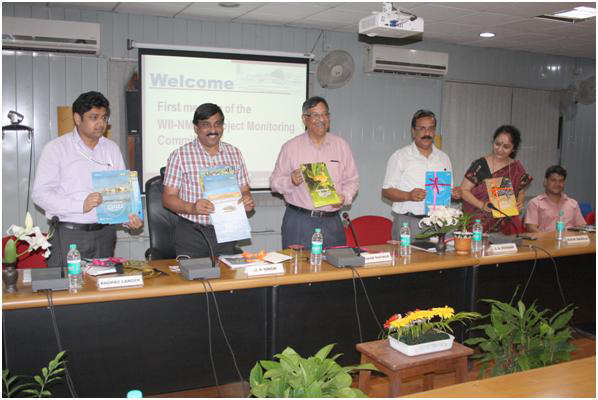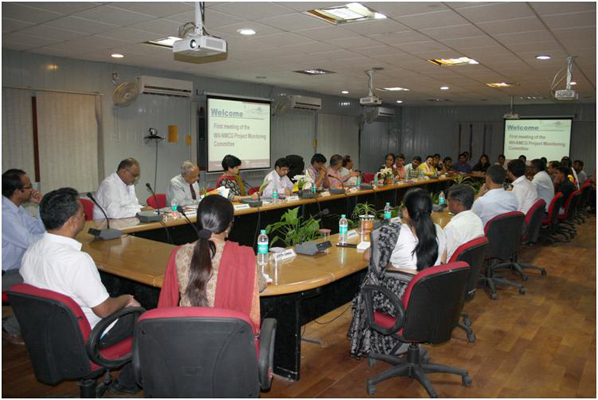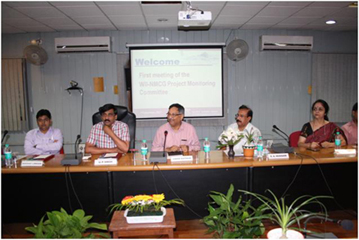First Meeting of the Monitoring Committee of the WII-NMCG Project (Biodiversity Conservation and Ganga Rejuvenation)
|
The entire WII-NMCG project team comprising of the faculty and the project personnel participated in the meeting. The meeting started with the welcome of the monitoring committee members. Shri U.P. Singh, Director General, NMCG released the six brochures published under the “Vibrant Ganga Series”, on the aquatic fauna of Ganga River. After a round of introductions, the committee members were given a brief on the project. Shri U.P. Singh, in his opening remarks stated that although Wildlife Institute of India’s biodiversity project is small in financial terms, it is a very important component of the NMCG and Namami Gange programme. Presentations on the objectives, approaches and progress under the six components were given by the component coordinators. In addition to the presentations on the approach and work done on three specialized aspects of the project viz: Ecotoxicology, Genetics and Remote Sensing & GIS were also made. The committee members were appreciative about the project approach and the progress achieved so far. Shri U.P. Singh concluded that project has initiated well, however, it is a very challenging task and we need to keep up the momentum. He suggested that other organizations and wings of NMCG, such as SPMGs, Ganga Vichar Munch and their activities should also be linked with the biodiversity conservation. |
 |
 |
Last Updated: September 7, 2017


 The first meeting of the Monitoring Committee of the WII-NMCG Project was held at Wildlife Institute of India on 7th September 2017. The meeting was chaired by Shri U.P. Singh, Director General, National Mission for Clean Ganga (NMCG) & Chairperson, Monitoring Committee. The committee members included Dr. V.B. Mathur, Director, Wildlife Institute of India, Dr. Savita, Director, Forest Research Institute, Dehradun, Dr. Arun Kumar, Director, Dolphin Institute of Biomedical & Natural Sciences, Dehradun, Dr. Raghav Langer, Director, State Program Management Group Uttarakhand, Dr. Sandeep Behera, Biodiversity Consultant, NMCG.
The first meeting of the Monitoring Committee of the WII-NMCG Project was held at Wildlife Institute of India on 7th September 2017. The meeting was chaired by Shri U.P. Singh, Director General, National Mission for Clean Ganga (NMCG) & Chairperson, Monitoring Committee. The committee members included Dr. V.B. Mathur, Director, Wildlife Institute of India, Dr. Savita, Director, Forest Research Institute, Dehradun, Dr. Arun Kumar, Director, Dolphin Institute of Biomedical & Natural Sciences, Dehradun, Dr. Raghav Langer, Director, State Program Management Group Uttarakhand, Dr. Sandeep Behera, Biodiversity Consultant, NMCG.






